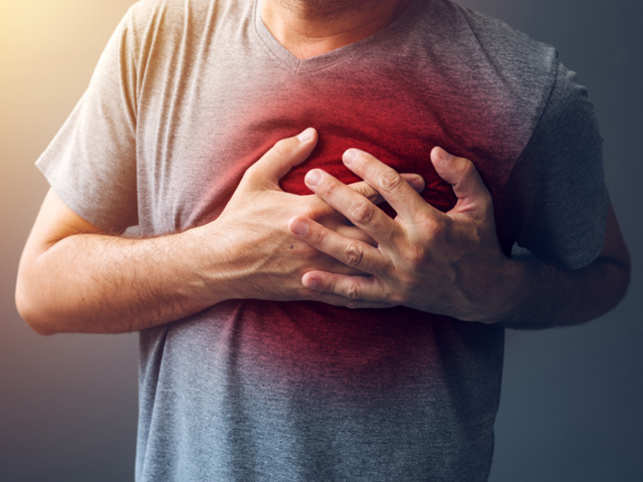In PLV (mechanical ventilation), oxygen - carrying fluids - is dripped through the lungs into the lungs of the patient. In this article I will describe how PL V is used today and how patients who receive it can be cared for. The currently preferred liquids are liquids with oxygen and carbon dioxide bearing properties (e.g. liquid oxygen, liquid carbon monoxide). Perflubron helps to open collapsed alveoli, increase gas exchange and improve lung conformity so that the ventilator can operate at the same level it reaches. This improved conformity allows ventilation with increased tidal volume, resulting in increased gas exchange and PFC fluids in the lungs, which can contribute to improved ventilation and mismatch of the perfusion. ...

As the coronary arteries narrow, oxygen-rich
blood becomes harder to reach the heart muscle, sometimes causing pain
and discomfort known as angina pectoris. Blood clots block coronary
arteries and form, which can trigger a heart attack by cutting off parts
of the heart muscle from the blood supply.
A heart attack, also called a heart
attack, occurs when parts of the heart muscle do not get enough blood.
An oxygen-depleted heart muscle causes heart attack symptoms that can be
felt during a heart attack.
A heart attack occurs when blood flow,
which supplies the heart muscle with oxygen, is severely restricted or
completely interrupted. A less common cause is a blockage of the
coronary arteries, which can stop the flow of blood to the heart
muscles. The longer the blockages last, the more time passes without
treatment to restore blood flow.
This occurs when the coronary arteries,
which supply the heart muscles with blood, slowly become clogged with
plaque and other substances called plaques.
When it collapses, clots can form that
can block oxygen - rich blood that doesn't get into the muscles of the
heart.
This causes the heart muscles to begin
to die, and you begin to feel the symptoms of a heart attack. Heart
attacks occur when blood flow to parts of the heart is blocked because
part of it is damaged. This can happen in a variety of ways, such as
blockage of the arteries or blockage of blood vessels or clogged
arteries because part or all of the muscles are damaged, according to
the American Heart Association.
If you see signs of a heart attack in
yourself or another person, call 911 immediately, according to the
American Heart Association. The indications for heart attacks vary
between men and women, and if you are someone at high risk for this
disease, it is a good way to learn about the dangers of heart disease if
you know the signs and symptoms of a heart attack.
A heart attack occurs when the
convulsion of the coronary arteries occurs over a long period of time
and immediate treatment is essential. Some of these symptoms can be
congestive heart failure, also called myocardial infarction (MI), and
occur at rest. Heart attacks can also occur in people who are at high
risk of heart disease, such as people with high blood pressure, high
cholesterol, diabetes or high triglycerides.
Breast pain or discomfort in the centre
of the breast is also described as a "contusion" that lasts for more
than a few minutes, disappears and returns.
Coronary heart disease includes heart
attack, congestive heart failure, stroke, coronary heart disease and
coronary angina. Cardiovascular disease (also known as angioedema,
angioplasty or angiotensin-1,2,3,4,5) is chest pain and pressure that
occur when the blood and oxygen supply to the heart muscles cannot keep
pace with the needs of the muscles. If the coronary arteries narrow by
more than 50 to 70 percent, the arteries are unable to increase the
blood supply to the heart muscle.
A heart attack occurs when blood flow to
the heart is blocked due to clots or plaques that have formed in the
arteries over time. Heart muscles need oxygen to function properly, and
in some patients they may die from lack of oxygen if blood flow is
blocked. A progressive decrease in blood flow to the heart can occur in
patients with coronary heart disease, heart failure, stroke and coronary
angina.
A heart attack occurs when plaques in
the arteries of the heart become inflamed and clots form that block
blood flow to the heart muscles. Therefore time is a crucial factor for
people who suffer a heart attack and they need to be operated quickly
This allows blood flow to be restored before irreversible damage occurs.
Older people are more likely to have arm
pain, nausea, vomiting and sweating, as well as confusion, fainting and
difficulty breathing. Older women and diabetics, who are at higher risk
of heart attack due to high blood pressure and diabetes, do not have
chest pain.
In general, the symptoms of heart attack
occur gradually, stop, then start again and are often vague or vague.
Heart attack is often caused by a combination of the above causes, but
is more common than either of these two conditions. Sudden cardiac
arrest is the leading cause of death in people with heart disease or
heart failure. A "myocardial infarction" is a medical shorthand for a
myocardial infarction caused by an irregular heart rhythm, sudden loss
of blood flow to the heart or other organs.
A heart attack occurs when the arteries
that supply the heart with blood, such as the coronary arteries, become
blocked due to an accumulation of cholesterol or other substances. Heart
attacks and heart attacks can cause a lack of oxygen, which results in
blood vessels not functioning effectively and in a decrease in blood
flow to other organs and organs. A heart attack or heart attack can also
embed life-threatening conditions such as heart failure in heart tissue
that is not receiving enough oxygen.
Comments
Post a Comment